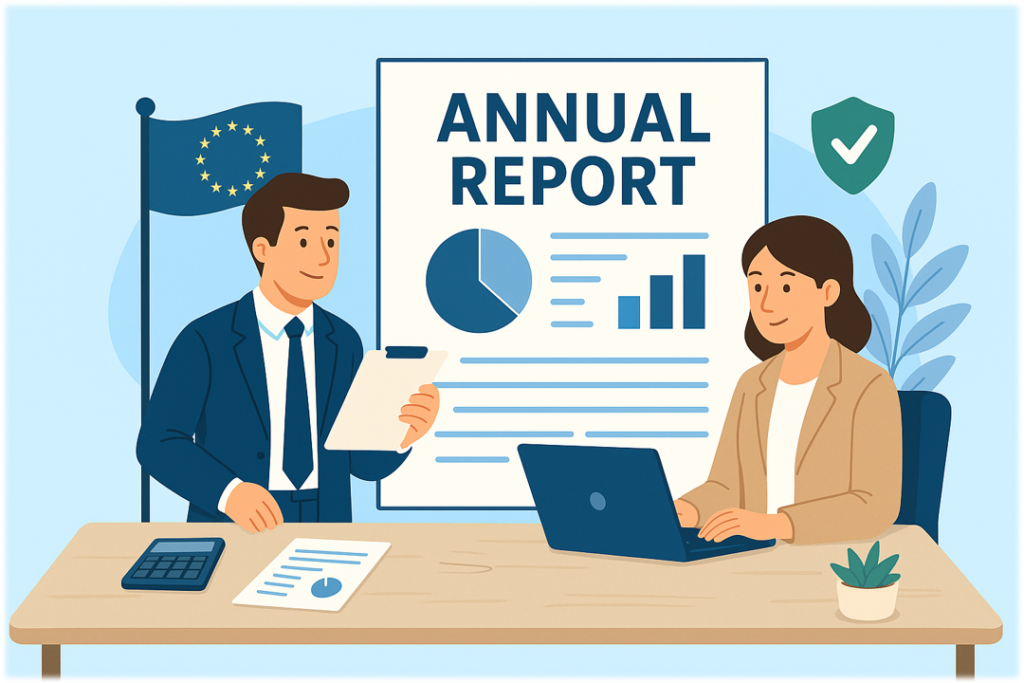
All companies registered in Estonia must prepare and submit an annual report (annual accounts) each year — including dormant entities with no activity. This is more than a formality: timely filing ensures legal compliance, upholds transparency, and helps you avoid penalties
Submit Your Annual Report—Quick & Easy!
Let us handle your company’s annual report filing, so you’ll never worry about deadlines or compliance again! Timely and accurate reporting keeps your business safe, compliant, and free of penalties.
Annual Report Submission—Starting from just €150 🚀
Our expert accountants will ensure your report meets all Estonian legal standards, saving you time and hassle. Focus on growth, we’ll take care of the rest! 🌱
🚦 Get Started in 2 Minutes:
- ✏️ Provide us basic company details.
- 🗂️ We prepare and submit your report.
- ✅ Stay compliant, worry-free!
In this guide, we’ll explain who must submit an annual report, what it includes, key deadlines, the consequences of non-compliance, and how to file via the e‑Business Register. The goal is to help foreign founders and e-residents understand their obligations and file annual accounts accurately, in line with Estonian accounting standards and the law.
Financial Year Basics
A company’s financial year lasts 12 months, typically aligning with the calendar year (January 1 to December 31). However, the company’s articles of association can specify a different 12-month period as its financial year. This means that while many businesses follow the standard calendar year for convenience, they are free to choose any 12-month span that better suits their needs, as long as it covers a full consecutive year.
When setting your financial year, choose 12 consecutive months that match your company’s actual business cycle. This way, income and expenses from the same activities fall into the same reporting period, giving a more accurate view of performance.
Who Needs to Submit an Annual Report?
Every legal entity in Estonia must file an annual report – regardless of size, ownership, or whether any business activity took place during the year. This includes:
- Private limited companies (OÜ) – the most common type for local entrepreneurs, foreign-owned businesses and e-residents.
- Public limited companies (AS) – usually larger enterprises with additional audit requirements.
- Non-profit associations (MTÜ) – must also file annual reports, even if they operate mainly on volunteer work or have no income.
- Dormant & inactive companies – even if your company had zero transactions or revenue, you still must file a “nil” annual report. There is no exemption for inactivity – failing to report can lead to fines or even the removal of the company from the register.
In short, every Estonian accounting entity (including foreign-owned or one-person companies) has an annual reporting obligation by law. There are no exceptions, so it’s crucial to be aware of the deadlines and requirements.
When is the Annual Report Due?
 |  |  |
The standard deadline for submitting your annual report is within 6 months after the end of the financial year. For most companies that follow the calendar year as their financial year, this means June 30 of the following year is the last day to file.
- Financial year = Calendar year: Deadline is June 30 every year (if your fiscal year runs from January 1 to December 31). Most local companies use the calendar year as their financial year.
- Different financial year: If your company has a non-calendar fiscal year (e.g. April–March), then the deadline is 6 months after that year-end date. (For instance, a fiscal year ending March 31 would mean a report due by September 30.)
- New companies: Special rule for the first annual report – it can cover up to 18 months. If you founded your company in the first half of the year (before July 1), your first report will cover the remainder of that year and is due by the next June. If you founded it in the second half (after July 1), you can combine the remainder of that year with the entire next year and submit the first report by June of the year after next.
Avoid last-minute filing
Many companies submit their reports on June 30, putting heavy load on the system. Preparing and filing well in advance helps avoid delays, technical issues, and potential penalties. Extensions are rare and not guaranteed, so plan for the standard deadline.
What Does the Annual Report Include?
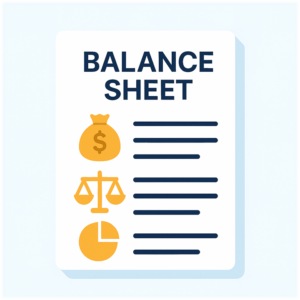 | 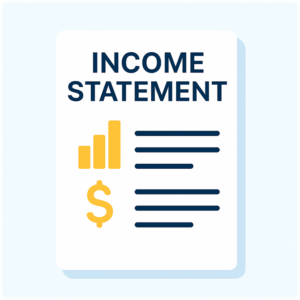 | 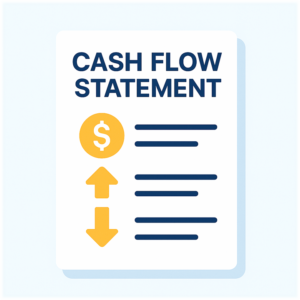 |
An annual report (in Estonian: majandusaasta aruanne) is a set of documents that shows your company’s financial position and activity for the year. The exact content depends on your size category and reporting standard (Estonian GAAP or IFRS), but it typically includes:
- Management report — a narrative overview of the year: principal activities, key events, plans, and risks. If losses exceed equity or other issues arise, it must explain how the business will be sustained and problems addressed.
- Annual accounts / financial statements, usually comprising:
- Balance sheet — assets, liabilities, and equity at year‑end.
- Income statement (profit and loss) — revenue and expenses over the year, showing profit or loss.
- Cash flow statement — cash inflows and outflows from operating, investing, and financing activities.
- Statement of changes in equity — for larger entities, movements in share capital and retained earnings.
- Notes — accounting policies, clarifications, and breakdowns (e.g., fixed assets, loans). The notes also state whether Estonian GAAP or IFRS was applied.
Micro and Small Companies (abridged reporting)
Estonia allows abridged annual reports for micro and small undertakings using the Estonian financial reporting standard (local GAAP). These reports include at least a balance sheet, income statement, and notes; cash‑flow and equity statements may be omitted to keep reporting simple.
- Micro undertakings: no management report is required when using the abridged report (it’s needed only if net assets fall below legal requirements).
- Small undertakings: a management report is required. You may always opt to report under a higher category if you prefer broader disclosure.
Auditor’s Report and Audit Requirements
If your company is subject to an audit obligation, you must include an independent auditor’s report in your annual report. This document, prepared by a licensed auditor, confirms that your financial statements have been audited or reviewed and provides the auditor’s professional opinion.
In Estonia, the requirement to have your annual report audited depends on your company’s financial performance and size thresholds set by law:
Most OÜs and small startups sit below Estonia’s audit thresholds, so an audit isn’t required. As you grow, track revenue, assets, and headcount—crossing the limits triggers a mandatory audit, and you must engage a licensed auditor and attach their report to your annual accounts.
Compliance with Estonian Accounting Standards
Estonia has strict standards to ensure financial reports are high-quality, comparable, and fully compliant. When preparing your annual accounts, keep in mind the regulatory requirements set by the Estonian Accounting Act and Commercial Code to avoid issues with the approval of your filed report.
Accounting Standards (GAAP/IFRS)
Annual reports must comply with Estonian financial reporting standards (often called Estonian GAAP – Generally Accepted Accounting Principles) or IFRS (International Financial Reporting Standards) as adopted by the EU. In practice, most small and medium companies use GAAP (a framework aligned with IFRS principles and simplified for small businesses), larger companies or those part of international groups might use full IFRS. Whichever standard you use, it should be applied consistently and disclosed in the notes.
Language and Currency
The official annual report must be filed in the Estonian language and in the local currency (Euro, €). However, the system does allow adding an informative English translation for convenience – you can fill in the report in English alongside Estonian, and generate an English version for your own use or foreign shareholders. Only the Estonian version is legally recognized and must be digitally signed and submitted to the register. All amounts are reported in euros (with cents, or in thousands of euros as specified).
How to File the Annual Report via the e‑Business Register
All annual reports in Estonia are filed online via the e‑Business Register (e‑Äriregister) using the e‑Annual Reporting module. Follow these steps:
- Prepare your financials. Finalize the balance sheet, income statement, notes, and the management report. Make sure accounts reconcile and disclosures are complete. If bookkeeping isn’t up to date, first collect invoices, bank statements, and other documents for the year.
- Sign in to the portal. Open the e‑Business Register and log in with an ID‑card, e‑Residency card, EU eID, Smart‑ID, or Mobile‑ID. Board members and other authorized users will see the company profile and the Annual reports section after authentication.
- Create the report for the correct year. In your company’s Annual reports area, start a new report for the financial year being filed. The system provides structured forms for figures (assets, liabilities, revenue, expenses) and text sections (management report, notes).
- Enter or import data. Fill in the forms manually or, if your software supports it, upload an XBRL/XML file to pre‑populate the report. Check every section for completeness.
- Review and validate. Use the portal’s checks, confirm that statements tie together, and ensure the required notes and management report are attached. Correct any validation errors before moving on.
- Approvals and digital signatures. Have the shareholders approve the annual report (as applicable). Then the management board logs in and digitally signs the report in the portal with the chosen e‑ID method.
- Submit to the Commercial Register. A board member (or an authorized representative, e.g., your accountant with a mandate) submits the signed report. The system updates the company’s record to show the report is submitted; the document becomes part of the public file in the register.
Practical Tips
- You can authorize an accountant to prepare and enter data, but directors remain legally responsible for the content—review carefully before signing.
- Keep company authorities and contact details current in the portal to receive notices.
- If you’re unsure about any section, start early and ask for help—fixing issues is easier before the deadline.
Consequences of Late or Missing Annual Reports
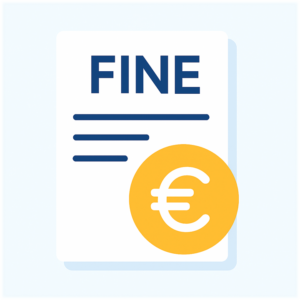 | 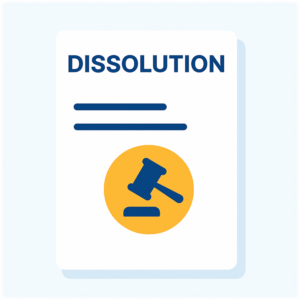 |  |
Failing to submit your annual report is a serious compliance issue in Estonia. It can trigger penalties, legal action, and damage to your company’s standing.
- Fines and penalty payments. If the report isn’t filed by the deadline, the company—and in some cases board members—can be fined. Authorities typically issue a warning or demand first, then a penalty. Fines commonly range from €200 to €3,200 and may be repeated until the report is submitted.
- Legal enforcement and dissolution. Persistent non‑compliance can lead the Estonian Commercial Register to start a compulsory dissolution (deletion) procedure. After multiple notices, a court may order the company to be removed from the register.
- Business restrictions and reputational harm. Missing reports are visible in the e‑Business Register. Banks, investors, and partners check this public record; seeing non‑compliance can deter them from working with you and erode trust in your business.
If you might miss the deadline — act quickly:
- Prepare and file ASAP (even a dormant report if there was no activity).
- Respond to registrar notices and follow the instructions in the e‑Business Register.
- Fix prior years if earlier reports are missing.
- Set controls—calendar reminders, task owners, and bookkeeping routines to prevent repeat issues.
If you need support, Eesti Firma can help you compile and submit the report and restore good standing with the Commercial Register.
Tips for E-Residents and Foreign Founders
Estonia’s digital setup is convenient—but the rules are strict. Use these tips to file your annual report smoothly:
- Keep books up to date all year. Record sales/purchase invoices and keep expense receipts. Store documents in the cloud and retain financial records for at least 7 years as required by law. Good bookkeeping = fewer errors and a faster year‑end.
- Dormant ≠ no report. Even with no transactions, you must file an annual report (usually a simplified/dormant one). If nothing is distributed, no corporate income tax arises—but the report is still mandatory to avoid penalties.
- Plan the deadline and start early. Annual reports are due within 6 months after the financial year end (often June 30 for calendar‑year companies). You can file as soon as the books are closed. Early filing helps you resolve questions and avoid last‑day portal slowdowns.
- Know local rules—or get help. Estonian GAAP/IFRS and tax rules have nuances (e.g., non‑deductible costs, equity contribution reporting, VAT registration once you cross the threshold). A professional accountant can keep you compliant with the Accounting Act, Commercial Code, and tax regulations while you focus on the business.
Need Help with Annual Report Filing?
 |  |  |
Filing an annual report for the first time can be daunting—especially under unfamiliar rules. It combines accounting, legal compliance, and use of Estonia’s e‑Business Register. You don’t have to do it alone: Eesti Firma helps founders file accurately and on time.
We support foreign founders and e‑residents with end‑to‑end compliance—from bookkeeping to annual reports and tax filings. Working with our accountants and consultants means:
- Compliance, done right. Prepared under Estonian GAAP or IFRS (as adopted in the EU). We track legal updates—such as audit thresholds and reporting formats—so nothing essential is missed.
- Time saved. We compile, reconcile, and submit the report, so you can focus on running the business—even if you don’t speak Estonian.
- Peace of mind. Deadline monitoring, proactive reminders, digital signatures, and communication with authorities if questions arise.
- Year‑round support. Daily accounting, payroll, VAT returns, and corporate compliance to keep your company in good standing.
Directors remain legally responsible for report content, but with Eesti Firma the process is clear and manageable. Many entrepreneurs trust our team from day one to set up compliant accounting.
Get Us in Touch
An annual report is more than a formality—it reflects Estonia’s commitment to transparency and sound governance. With Eesti Firma’s accounting and bookkeeping, you can file quickly and correctly, avoid penalties, and build trust in your company.
We’ll guide you end‑to‑end so your business stays in good standing with the Commercial Register. Contact us to receive a clear document checklist and a practical filing timeline for your company.
FAQ | Frequently Asked Questions
Below, you are going to find a list of frequently asked questions regarding preparation and submission of the annual report in Estonia, which our consultants encounter during their work.
- What is the annual report of an Estonian company?
The annual report is an official document summarizing the company’s financial activities and indicators for the 12-month accounting period. It consists of main statements detailing the company’s financial condition, business transactions, and comprehensive financial statements as required by Estonian law.
- Where is the annual report submitted in Estonia?
In Estonia, annual financial statements must be submitted digitally to the Business Register (Commercial Register). Submission requires a digital signature, an ID card, or Mobile-ID by the management board or involving a professional accountant in the process.
- What are the deadlines for submission?
The annual report should be filed within 6 months after the financial year ends. For entities with a calendar-year financial year, the deadline is June 30 of the following year.
- Should inactive companies submit an annual report?
Yes, even inactive and dormant companies must submit annual financial statements indicating no economic activity. This is essential for all companies registered in Estonia to maintain compliance.
- What data should be included in the financial statement?
The annual report must include comprehensive financial disclosures on the company’s economic activities and key financial positions, such as the balance sheet, profit and loss statement, cash flow statement, bank statements, annexes clarifying financial data, and an auditor’s report if auditing is obligatory.
- How do I submit the annual report?
Reports are filed via the e-portal of the Business Register. Gaining access requires an Estonian electronic signature (ID card, e-Residency, or Mobile-ID). Alternatively, if you do not have an e-signature, you can authorize a local accountant to prepare and submit the report on your behalf, using a scanned copy with your signature.
- What happens if the report is not submitted on time?
Late submission of the annual financial statements can result in fines and, in severe cases, compulsory liquidation of the company by the Estonian authorities.
